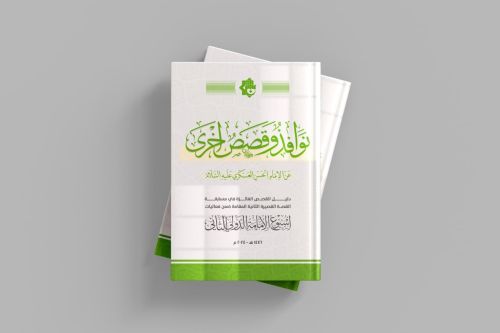

Grammar


Tenses


Present

Present Simple

Present Continuous

Present Perfect

Present Perfect Continuous


Past

Past Simple

Past Continuous

Past Perfect

Past Perfect Continuous


Future

Future Simple

Future Continuous

Future Perfect

Future Perfect Continuous


Parts Of Speech


Nouns

Countable and uncountable nouns

Verbal nouns

Singular and Plural nouns

Proper nouns

Nouns gender

Nouns definition

Concrete nouns

Abstract nouns

Common nouns

Collective nouns

Definition Of Nouns


Verbs

Stative and dynamic verbs

Finite and nonfinite verbs

To be verbs

Transitive and intransitive verbs

Auxiliary verbs

Modal verbs

Regular and irregular verbs

Action verbs


Adverbs

Relative adverbs

Interrogative adverbs

Adverbs of time

Adverbs of place

Adverbs of reason

Adverbs of quantity

Adverbs of manner

Adverbs of frequency

Adverbs of affirmation


Adjectives

Quantitative adjective

Proper adjective

Possessive adjective

Numeral adjective

Interrogative adjective

Distributive adjective

Descriptive adjective

Demonstrative adjective


Pronouns

Subject pronoun

Relative pronoun

Reflexive pronoun

Reciprocal pronoun

Possessive pronoun

Personal pronoun

Interrogative pronoun

Indefinite pronoun

Emphatic pronoun

Distributive pronoun

Demonstrative pronoun


Pre Position


Preposition by function

Time preposition

Reason preposition

Possession preposition

Place preposition

Phrases preposition

Origin preposition

Measure preposition

Direction preposition

Contrast preposition

Agent preposition


Preposition by construction

Simple preposition

Phrase preposition

Double preposition

Compound preposition


Conjunctions

Subordinating conjunction

Correlative conjunction

Coordinating conjunction

Conjunctive adverbs


Interjections

Express calling interjection


Grammar Rules

Passive and Active

Preference

Requests and offers

wishes

Be used to

Some and any

Could have done

Describing people

Giving advices

Possession

Comparative and superlative

Giving Reason

Making Suggestions

Apologizing

Forming questions

Since and for

Directions

Obligation

Adverbials

invitation

Articles

Imaginary condition

Zero conditional

First conditional

Second conditional

Third conditional

Reported speech


Linguistics

Phonetics

Phonology

Linguistics fields

Syntax

Morphology

Semantics

pragmatics

History

Writing

Grammar

Phonetics and Phonology

Semiotics


Reading Comprehension

Elementary

Intermediate

Advanced


Teaching Methods

Teaching Strategies

Assessment
Nonces, mistakes, and mountweazels
المؤلف:
Rochelle Lieber
المصدر:
Introducing Morphology
الجزء والصفحة:
13-2
14-1-2022
927
Nonces, mistakes, and mountweazels
Further, sometimes we find items in dictionaries that we might hesitate to call words – even if they do occur in the dictionary. Among these items are words that are labeled as ‘nonce’, meaning that they’ve been found just once, often in the writing of someone important, but that nevertheless don’t seem to occur anywhere else. The OED On-line, for example, lists as a nonce the word agreemony, which they define as ‘agreeableness’, and illustrate with a single quotation from the seventeenth-century writer Aphra Behn. Was this ever really a word? Indeed, the OED even lists some words that occur only once, and further, in contexts which don’t illuminate their meaning; for example, we can find the word umbershoot used by James Joyce in Ulysses, about which the OED maddeningly says only “meaning obscure”! Words or not?
Very extensive dictionaries like the OED sometimes also contain words that they identify as mistakes. For example, we can find an entry for the word ambassady, which occurs in a single quotation from 1693 and is, according to the OED, perhaps a mistake, where the author might have meant the word ambassade “the mission or function of an ambassador.” It occurs in the dictionary, but is it really a word?
And finally, there are what have come to be called ‘mountweazels’. A mountweazel is a phony word that is inserted into a dictionary so that its makers can identify lexicographic piracy. lexicographers sometimes make up an entry and include it so that they can tell if another lexicographer is using their dictionary as a source without attribution (which is plagiarism, of course). Surely we wouldn’t want to count such impostors as real words, but they’re in the dictionary!
 الاكثر قراءة في Morphology
الاكثر قراءة في Morphology
 اخر الاخبار
اخر الاخبار
اخبار العتبة العباسية المقدسة

الآخبار الصحية















 "المهمة".. إصدار قصصي يوثّق القصص الفائزة في مسابقة فتوى الدفاع المقدسة للقصة القصيرة
"المهمة".. إصدار قصصي يوثّق القصص الفائزة في مسابقة فتوى الدفاع المقدسة للقصة القصيرة (نوافذ).. إصدار أدبي يوثق القصص الفائزة في مسابقة الإمام العسكري (عليه السلام)
(نوافذ).. إصدار أدبي يوثق القصص الفائزة في مسابقة الإمام العسكري (عليه السلام) قسم الشؤون الفكرية يصدر مجموعة قصصية بعنوان (قلوب بلا مأوى)
قسم الشؤون الفكرية يصدر مجموعة قصصية بعنوان (قلوب بلا مأوى)


















